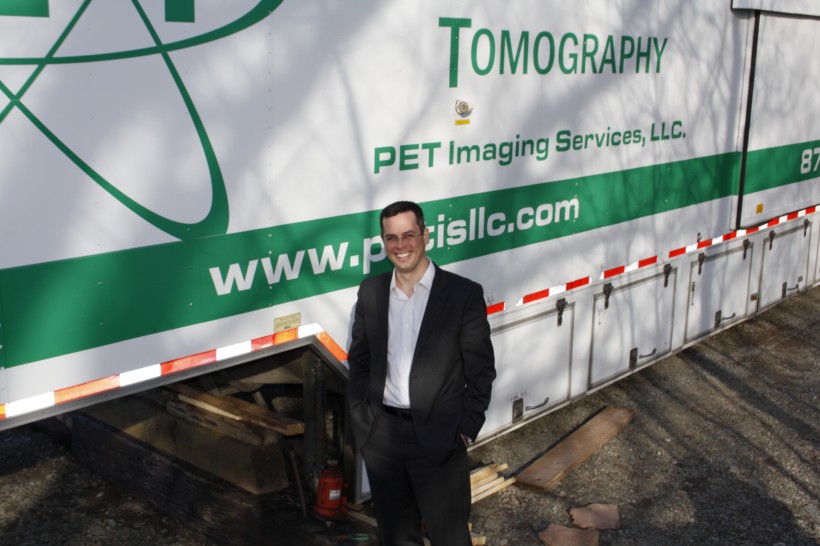Chad Munro’s demeanour had radically changed in 10 months — all of it for the better.
When we met for breakfast late last month, the CEO of Halifax Biomedical Inc. was buoyant and optimistic about the prospects for his medical device manufacturing business. He’s pleased with the Mabou-based company’s recent sales and regulatory approvals. He’s altering the structure of his business. He’s searching for funds.
It’s a marked improvement from our conversation last June. Halifax Biomed was then wondering how to proceed with its main product, the Halifax exam imaging device that allows two simultaneous X-rays to be taken from different angles. They had sold a couple of these, used for imaging the knee, but there were significant barriers to further sales.
It has since all but eradicated those barriers and sales of the device are proceeding well. What’s more, the firm has advanced far more quickly than expected with a new product focused on imaging the spine.
Though he’s a humble man, Munro made a strong case that Halifax Biomedical now occupies a unique space in Atlantic Canada because it is an ISO 13485 medical device company (read: maximum sophistication in medical devices), with regulatory approval in the U.S., Europe, Canada, and Australia. It deals with radiation and medical implants in the global market.
“We are operating at the highest level in medical devices,” said Munro, who founded the company in 2004. “We’ve been able to get to key customers that have become strong advocates for us and our products.”
The key to this newfound euphoria was two radical events in the development of the imaging product for the knee, which Munro refers to as a late-stage project. The product was selling for more than $700,000, a considerable outlay for a hospital, and usually required a $70,000 renovation to accommodate the bulky equipment. What’s more, hospitals that used the device were unable to pass the costs of using it to other funding bodies, such as the patient’s health insurer.
To tackle the first problem, the Halifax Biomed team redesigned the product so that it was smaller, cheaper and more manageable. “You don’t need a renovation — just bolt it to the floor and plug it in,” said Munro. Adios $70,000 renovation.
The smaller product also requires less in capital costs. The upfront payment dropped from $700,000-plus to about $200,000. But Halifax Biomed actually improved its margins in the transition because it is able to sell about $300,000 to $400,000 annually in products needed to operate the machine. Best of all, the American Medical Association in November approved four new billing codes so hospitals can pass these costs on to insurers, improving the economics of the business.
Meanwhile, the company had laid out a three-year time line to develop the product for imaging the spine, to be funded by a $1.9-million loan from the Atlantic Canada Opportunities Agency’s Atlantic Innovation Fund. It involves a different machine that requires different algorithms. Six months into the project, the team had already completed a minimum viable product.
Munro and his crew were 30 months ahead of schedule, so they applied for regulatory approval in the U.S. and received it in 70 days.
“We basically completed a medical diagnostic device out of an AIF-funded project two years ahead of schedule,” said Munro.
The device is to be used for post-operative diagnostics — that is, telling people whether they need spinal operations. There are four million candidates for such surgery in the U.S. each year, so the market is obviously huge.
They discovered that they couldn’t downsize this product, and the $820,000 price tag was prohibitive for most hospitals. So the company is building a mobile imaging unit. It has bought a van, which it will station in Boston. The unit with the spinal imaging system can travel between hospitals in the area to assess whether patients need procedures.
The goal is to one day have a fleet of these units in all major centres.
Halifax Biomedical is forming a subsidiary to house the spinal unit, and it is talking to four potential strategic partners about investing in the new unit. The talks are centred around a $2-million to $3-million investment for a small stake in the unit.
Meanwhile, Halifax Biomedical is also looking for about $5 million in investment from venture capital funds or strategic investors.
“We strongly believe that we have two very valuable diagnostic measurement tools that will impact the lives of a large percentage of the patient population,” said Munro.










